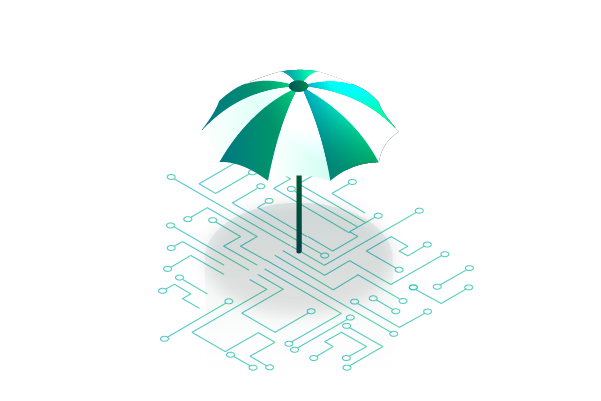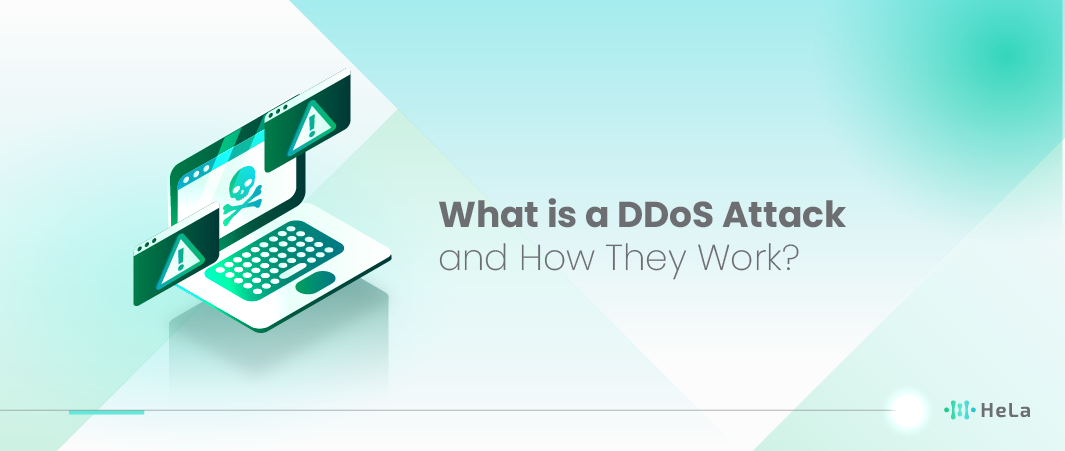In today’s digital era, the internet has become an indispensable part of our lives, powering everything from daily communication to critical infrastructure. However, this interconnectedness comes with its vulnerabilities, one of the most notorious being Distributed Denial of Service (DDoS) attacks. But what exactly is a DDoS attack? In simple terms, it’s a cyber-attack designed to overwhelm a website or online service with more traffic than it can handle, rendering it inaccessible to legitimate users.
DDoS attacks are not just an inconvenience but can have serious ramifications, from financial losses for businesses to significant disruptions in public services. Understanding how these attacks work, their different forms, and their impact is crucial for both individuals and organizations in today’s networked world.
At its core, a DDoS attack is a flood of unwanted traffic. Cybercriminals use a network of hacked computers and devices, known as a botnet, to send a massive amount of traffic to a targeted server or network. The sheer volume of requests overwhelms the target, causing slowdowns or complete shutdowns. This article aims to demystify DDoS attacks, exploring their mechanisms, the various types, and how they can be mitigated.
What is a DDoS Attack?

A Distributed Denial of Service (DDoS) attack is a malicious attempt to disrupt the normal functioning of a targeted server, service, or network by overwhelming it with a flood of Internet traffic. DDoS attacks are more complex and powerful than simple Denial of Service (DoS) attacks because they use multiple compromised computer systems as sources of attack traffic. These systems, often part of a botnet—a network of computers infected with malware and controlled as a group without the owners’ knowledge—can include a wide variety of devices, not just computers but also Internet of Things (IoT) devices like smart thermostats, cameras, and home appliances.
By leveraging the collective bandwidth and processing power of these hijacked devices, attackers can generate an overwhelming amount of traffic, much more than a single source could.
Also Read: Off Chain Vs. On Chain: Understanding the Risks and Rewards
This makes DDoS attacks difficult to defend against, as the traffic can come from thousands or even millions of sources across the globe, making it challenging to distinguish between legitimate users and attack traffic. The ultimate goal of a DDoS attack is to make the targeted website or online service unavailable to its intended users, causing disruption, financial loss, and damage to the organization’s reputation.
How DDoS Attacks Work?
DDoS, or Distributed Denial of Service attacks, operate by overwhelming a targeted server, website, or network with a flood of internet traffic, vastly exceeding its capacity to handle user requests. This orchestrated deluge is not designed to break through security barriers in the traditional sense (such as cracking passwords or exploiting software vulnerabilities) but aims to render the target inaccessible to legitimate users. Here’s a deeper dive into the technical mechanisms behind DDoS attacks:
- Multiplication of Traffic: At the heart of DDoS attacks is the use of multiple compromised computer systems as sources of traffic. These can include computers and other devices, such as IoT devices, all infected with malicious software and controlled by the attacker. This network of hijacked devices is often referred to as a “botnet.”
- Volume-based Attacks: The simplest form of DDoS, these attacks flood the target with an overwhelming volume of data, clogging the bandwidth. This can be likened to jamming a mailbox with junk mail, making it impossible to find legitimate correspondence.
- Protocol Attacks: These attacks target the very protocols that underpin the functioning of the internet. By exploiting weaknesses in these protocols, attackers can send a flood of requests that require complex processing by the target server, depleting its resources. This is akin to forcing someone to solve complex equations every time they receive a simple question, quickly overwhelming their ability to respond.
- Application Layer Attacks: The most sophisticated form of DDoS, these target the specific applications that a website relies on to function. By mimicking legitimate requests, these attacks can be harder to detect and mitigate. They’re like having a crowd of impostors block the entrance to a store, making it impossible for real customers to enter.
- Amplification Techniques: Attackers often amplify the volume of their attacks using techniques that exploit the normal functioning of internet protocols. For example, the DNS reflection attack involves sending small queries to a DNS server with the return address spoofed to that of the target, leading the server to send a much larger reply to the target. This not only magnifies the attack but also obscures its origin.
- Mitigation and Response: Defending against DDoS attacks often requires a multi-layered approach, including the use of anti-DDoS solutions that can absorb and filter out malicious traffic, the deployment of web application firewalls, and the implementation of scalable resources to handle sudden spikes in traffic. Additionally, maintaining robust security practices can help prevent devices from becoming part of a botnet in the first place.
In essence, DDoS attacks exploit the open and interconnected nature of the internet, using the strength of collective devices against individual targets. By understanding the technical foundations of these attacks, organizations can better prepare and protect themselves from such threats.
Different Forms of DDoS Attacks

Distributed Denial of Service (DDoS) attacks are a significant threat in the digital world, targeting businesses, governments, and individuals by overwhelming their online services with massive amounts of traffic. These attacks aim to disrupt the normal functioning of a targeted server, service, or network by flooding it with more requests than it can handle, causing it to slow down or crash, thereby denying service to legitimate users. DDoS attacks exploit various vulnerabilities in the internet architecture, and they come in different forms, each with its own attack vectors and mitigation strategies. Here’s a closer look at some of the most common types of DDoS attacks:
Volumetric Attacks
Volumetric attacks are the most straightforward and common form of DDoS attacks. They aim to consume the bandwidth of the targeted site or service by generating a huge volume of traffic. This is achieved by using a large number of compromised computers or devices (often part of a botnet) to create a flood of data requests sent to the target. The goal is to saturate the target’s bandwidth and prevent legitimate traffic from reaching the site. Examples of volumetric attacks include UDP floods, ICMP (Ping) floods, and other spoofed packet floods.
Protocol Attacks
Protocol attacks, also known as state-exhaustion attacks, target the network layer or transport layer of a network connection. These attacks exploit weaknesses in the protocol stack to consume server resources or the resources of intermediate communication equipment like firewalls and load balancers.
By sending malformed or slow pings, malicious connection requests, or partial packets, attackers can cause the target system to allocate maximum resources to handle these requests, thus depleting its ability to process legitimate traffic. Examples include SYN floods, Ping of Death, and Smurf DDoS attacks.
Application Layer Attacks
Application layer attacks, also known as Layer 7 attacks, target the top layer of the OSI model, where web pages are generated on the server and delivered in response to HTTP requests.
These attacks are more sophisticated and difficult to detect because they mimic legitimate user behavior, making it challenging to distinguish between malicious and legitimate traffic. Attackers exploit specific vulnerabilities in applications to overwhelm the server or service. Examples of application layer attacks include HTTP flood attacks, slowloris, and DNS query flooding.
Each type of DDoS attack requires a tailored approach to mitigation. For volumetric attacks, solutions include rate limiting, traffic shaping, and scrubbing centers that filter out malicious traffic. Protocol attacks can be mitigated by implementing robust firewall and intrusion detection systems that can identify and block malicious packet structures.
For application layer attacks, deploying web application firewalls (WAFs), monitoring traffic patterns, and enabling rate limiting on sensitive endpoints can help in mitigating the impact. Understanding these attack types and their mitigation strategies is crucial for protecting against the evolving landscape of DDoS threats.
The Impact of DDoS Attacks
The impact of Distributed Denial of Service (DDoS) attacks extends far beyond temporary disruptions of internet services. These attacks, by overwhelming a target’s network with an excessive amount of traffic, can lead to significant consequences for both businesses and individuals. Here’s a more detailed look into the potential effects of DDoS attacks:
For Businesses
- Operational Disruption: The immediate effect of a DDoS attack on a business is the disruption of its online services. This can include websites, online platforms, and other critical services being inaccessible to users, leading to operational downtime.
- Financial Loss: The operational disruption caused by DDoS attacks often translates into financial loss. For e-commerce platforms, downtime means lost sales. For other businesses, it could mean compensation costs, additional customer support expenses, and the need to invest in stronger cybersecurity measures.
- Reputational Damage: The inability to provide services reliably can tarnish a company’s reputation. Customers may lose trust in the affected business, leading to a decrease in customer loyalty and potential loss of future sales. Restoring a damaged reputation can take a significant amount of time and resources.
- Regulatory Consequences: Depending on the industry and jurisdiction, businesses may face regulatory penalties for failing to protect their systems and data from cyber-attacks. This is especially true for industries like finance and healthcare, where data protection is heavily regulated.
- Resource Diversion: Responding to and recovering from a DDoS attack can consume considerable organizational resources. Companies often need to divert attention and resources from other projects or operational areas to address the immediate impact and prevent future attacks.
For Individuals
- Loss of Service: Individuals relying on affected services for communication, information, or transactions can experience significant inconveniences. This can affect personal and professional activities, leading to a loss of productivity and opportunities.
- Compromised Personal Information: While DDoS attacks primarily target the availability of services, the chaos they create can be used as a smokescreen for other malicious activities, such as data breaches that compromise personal information.
- Financial Impact: For individuals running small online businesses or services, a DDoS attack can have direct financial implications, similar to larger businesses but on a scale that can be particularly devastating for a small enterprise.
- Psychological Stress: Being the target of, or even just affected by, a DDoS attack can cause significant stress and anxiety for individuals. This is especially true for those whose livelihoods depend heavily on the availability of online services.
The impact of DDoS attacks is far-reaching, affecting not just the operational aspects of businesses but also having financial, reputational, and psychological effects on both organizations and individuals. The interconnected nature of online services means that the fallout from these attacks can ripple through the economy, underscoring the importance of robust cybersecurity measures and incident response plans to mitigate the risks and consequences of such cyber threats.
Mitigation and Protection Strategies

To effectively mitigate and protect against Distributed Denial of Service (DDoS) attacks, it’s crucial to implement a combination of proactive and reactive strategies. These measures are designed to not only prevent attacks from happening but also to minimize the damage and recover quickly if an attack occurs. Here’s a deeper look into these strategies:
Proactive Measures
- Risk Assessment and Planning: Regularly assess your network and applications for vulnerabilities that could be exploited in a DDoS attack. Develop a response plan that outlines steps to take in the event of an attack, including communication protocols and roles.
- Network Security: Implement strong security practices such as securing network perimeters with firewalls, intrusion detection systems (IDS), and intrusion prevention systems (IPS). These tools can help detect and block malicious traffic.
- Redundancy and Scalability: Design your infrastructure with redundancy and scalability in mind. Having multiple data centers or cloud-based services can distribute the load and reduce the impact of an attack on a single point of failure.
- Traffic Analysis and Baseline: Continuously monitor network traffic to establish a baseline of normal activity. This enables the early detection of anomalies that could indicate a DDoS attack, allowing for quicker response.
- DNS Security: Secure your Domain Name System (DNS) infrastructure, as it’s a common target for DDoS attacks. Consider using managed DNS services that offer additional security features and can absorb large volumes of traffic.
- Content Delivery Networks (CDNs): CDNs can help mitigate DDoS attacks by distributing traffic across multiple servers, making it harder for an attacker to target a single server or site.
Reactive Measures
- Real-time Detection: Implement systems that can detect DDoS attacks in real-time. This requires continuous monitoring of traffic to identify sudden spikes or patterns indicative of an attack.
- Traffic Diversion: Utilize DDoS mitigation services that can redirect traffic away from your network during an attack. These services can cleanse traffic by filtering out malicious requests and only allowing legitimate traffic to pass through.
- Rate Limiting: Temporarily limit the rate of requests to your servers during an attack. This can help prevent the servers from becoming overwhelmed while allowing legitimate traffic to continue.
Also Read: What Is Wormhole Crypto? Detailed Analysis of Its Components and Workflow
- Incident Response Team: Have a dedicated incident response team in place that is trained to deal with DDoS attacks. This team should be able to quickly implement the response plan and coordinate efforts to mitigate the attack.
- Post-Attack Analysis: After an attack, conduct a thorough analysis to understand its nature, impact, and how it was mitigated. Use this information to update your response plan and improve your defenses against future attacks.
- Collaboration: Collaborate with your Internet Service Provider (ISP) and other relevant parties during an attack. They can provide additional resources and support in mitigating the attack.
By integrating these proactive and reactive strategies into your cybersecurity framework, you can enhance your resilience against DDoS attacks, protect your online assets, and ensure the continuity of your services.
Conclusion
In the fight against DDoS attacks, knowledge is power. Understanding what a DDoS attack is, how it operates, and its various forms is the first step in protecting yourself and your organization. While the threat of DDoS attacks cannot be entirely eliminated, adopting comprehensive security measures can significantly reduce their likelihood and impact. From employing basic cybersecurity hygiene to leveraging advanced DDoS protection services, there are multiple layers of defense that can be built to safeguard against these disruptive threats. As technology evolves, so do the tactics of cybercriminals, making it imperative for cybersecurity efforts to stay one step ahead. In this ongoing battle, staying informed and prepared is the key to resilience in the digital age.
Disclaimer: The information provided by HeLa Labs in this article is intended for general informational purposes and does not reflect the company’s opinion. It is not intended as investment advice or recommendations. Readers are strongly advised to conduct their own through research and consult with a qualified financial advisor before making any financial decisions.

Joshua Soriano
I am Joshua Soriano, a passionate writer and devoted layer 1 and crypto enthusiast. Armed with a profound grasp of cryptocurrencies, blockchain technology, and layer 1 solutions, I've carved a niche for myself in the crypto community.
-
Joshua Soriano#molongui-disabled-link
-
Joshua Soriano#molongui-disabled-link
-
Joshua Soriano#molongui-disabled-link
-
Joshua Soriano#molongui-disabled-link

